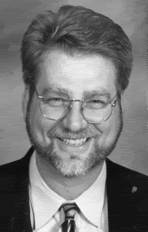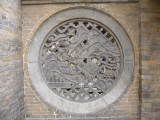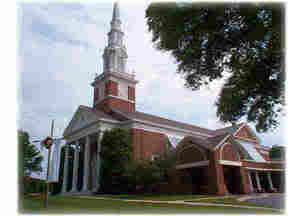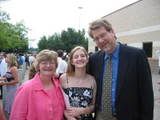resurrection and the new creation (matthew 28)
There is at the end of Matthew’s gospel an element of surprise, but if we have been reading closely we should have known. All of the clues were there: he is “God with us”, Emmanuel; he casts out demons and forgives sins; he bursts old wineskins and fills new ones; he gives sight to the blind and feeds the multitudes; he calms the storms. Again and again he is on the side of life and not death. He is acknowledged as someone who is more than human, more than a charismatic rabbi, more than a prophet, at Caesarea Philippi and on Mount Tabor at the transfiguration, by the deranged man chained to the graveyard and the Roman officer simply seeking a cure for his son. All of the teachings, all of the parables, all of the signs, every act of compassion, every intervention on behalf of life in the midst of death, it was all leading to this.
And yet if we have also been paying attention, all of the signs, of late, were pointing in a different direction. The one who is compassionate is betrayed. The one who gives the new commandment is a threat to those who implement the old policies. The one who is called “Lord” is a revolutionary in the eyes of the empire, who want all of the allegiance. The one who changes water into wine, who is himself “living water”, cries out, “I thirst”. The one who is the light of the world hangs on a cross at Golgotha; darkness covers the land. Then he says, bluntly, “It is finished”. The end.
As they used to say in concerts, “Elvis has left the building!”. Meaning: the show is over.
We might have followed along and at this point we have given up, like the disciples Jesus who would later meet on the road to Emmaus. We might have gone back to our lives, we might have begun to pick up the pieces. Most of the disciples had fled in fear: another disappointment, another false hope.
And then, a surprising shift in the story: On the first day of the week, early in the morning, Matthew tells us, the women go to the tomb, to keep vigil. There they experience an earthquake, the shaking of the foundations. In Matthew, an angel had last appeared in the dream given to Joseph, in Egypt: “go home, Herod, the agent of death, has himself died”. The angel now shares the Easter message:
Do not be afraid. For I know that you seek Jesus, who was crucified.
He is not here. He is risen. Come, see the place where he lay.
Then go quickly and tell his disciple that he is risen from the dead, and that he is going before you, to Galilee. There you will see him.
They hear this news with a mixture of fear and joy. Fear, the old is passing away. Joy, something new is about to happen. They had come to see the Crucified Jesus. The crucified One---perfect tense, a past event described with ongoing significance and impact. The risen Jesus is always the crucified Jesus. We will talk more about that next Sunday, in the discovery of Thomas, the disciple who doubts.
But back to today’s gospel: he is not here---look, see for yourself. “Where is he?”, they must have wondered. He goes ahead of you—go to Galilee. Go and tell others.
And so, they obey, in the midst of their own fear and joy, they are the first witnesses, the first evangelists. They go quickly---there is a sense of urgency. And on the way they encounter Jesus, who greets them. They don’t quite know what to do; it is overwhelming. Then they worship him.
They worship him…just as they had done at Caesarea Philippi and on Mount Tabor. But here the worship flows into something else: go and tell my brothers to go to Galilee. He calls the disciples his brothers, the disciples who betrayed him, the disciples who denied that they knew him, the disciples who had all disappeared in fear. Go and tell my brothers to go to Galilee…
Why Galilee? In Matthew’s gospel, this is the “Galilee of the Gentiles”. There, at the conclusion of the gospel of Matthew the disciples will worship Jesus, on the mountain (but some will doubt!). There he will give the great commission to the disciples: go into all the world to make disciples. There he will give the promise: I am with you always, until the end of the age.
This is the Easter gospel, according to Matthew. There is little here about life after death understood as payday someday, as pie in the sky, as heavenly harp strumming. There is instead the intense conviction about life after death as the unfinished agenda. There is little here that is restful, as if we have reached a stopping place. There is a great deal of activity, urgency.
Easter is not a final resting place. Easter is the re-creation of a new world. Easter is not a quiet garden on the edge of Jerusalem. Easter is a busy gathering by the sea of Galilee. Easter is not tying it all up in a neat package. Easter is unleashing the power of Jesus, crucified and risen, into the world. Easter is nothing we could have planned or prepared for. Easter, Matthew tells us, is an earthquake. It is unsettled, and when it has taken place, all of the foundations are re-established.
What is foundational about Easter? Easter is a miracle. If there are no miracles, there is no resurrection. Easter is about the resurrection. The resurrection makes no rational sense. It is a category that defies human rationality. Resurrection is an act of faith. The truth of resurrection is revealed to us, it comes as a gift. The women, on that first Easter, almost stumbled upon it.
If there is no resurrection, none of this makes any sense. We could conceivably have gospels without the Christmas story---Mark’s Gospel, for example, has no birth narrative, no shepherds, no wise men, no angels’ voices. But without Easter, there would be no gospel. If there is no resurrection, no power beyond us, no victory of life over death, none of this makes any sense. All of the flowers, the music, the words, all of it simply adds up to positive thinking, our heroic attempt at the denial of death.
The apostle Paul considered the implications of this. In what is surely one of the longest and most complicated chapters in the Bible, I Corinthians 15, he insists, “if Christ has not been raised, our preaching is in vain and your faith is in vain”, and, “if the dead are not raised, then let us eat and drink, for tomorrow we die”.
The foundation of our faith is the resurrection, and in this faith, the New Testament teaches, we experience salvation. What is Salvation? Salvation is not believing the right thing in order that I might spend eternity in the right place. Salvation is the new creation, it is eternal life in the present with the crucified and risen Lord, salvation is a gift of God that begins in the present, that continues beyond death, and that never ends. And so our mission is not only getting people into heaven but also getting heaven into people, and then getting the life and death and resurrection of Jesus into the world, through the mission of his followers, the resurrection people.
I will sometimes overhear folks making fun of people who come to church only at Easter. I will be honest----I am glad to see you. And I am glad to see you today, because there is some confusion about who Christians are---the media does give an accurate portrayal of who we are, what we believe and what we do, and sometime we aren’t so good at communicating this ourselves. The politicians do not always want an accurate portrayal of who we are, what we believe and what we do…but that’s another story!
Easter is the moment when who we are, what we believe and what we do becomes clear. Easter is the power of the crucified and risen Jesus over the forces of death—that could be as we pray in a hospital room, or as we work for the end of apartheid in South Africa. Easter is a place to sleep for the homeless and Easter is a place to be comforted and challenged for the addict and Easter is a place to be healed for the person with HIV in Haiti and Easter is a place to be embraced for the lonely and Easter is a place to be challenged for the bored and Easter is a place to be stretched for the comfortable and Easter is a place to rest for the fatigued and Easter is a place to be made whole for the broken.
The Easter event, the resurrection, as reported in Matthew 28. 1-10, was continuous with everything Jesus had said and done throughout his life, every chapter within the book a little Easter. And so, for the follower of Jesus, all of life is continuous with this day, with this moment, all of life is Easter, a resurrection, a sign that yes, the crucified and risen Lord has overcome the powers of death, division, darkness, despair.
Do you believe it? It is, Paul tells us, like a new creation. It is, Matthew reports, like an earthquake. In 1950 an earthquake occurred in Tibet, near the border of India. Its effects were felt as far away as Norway and England. Among the results of the quake was the dislodging of a huge boulder that exposed within a mountain artifacts from the previous thousand years. An entirely new world became visible.
On Easter, on this Easter, if we have eyes to see and ears to hear, the stone is rolled away and the earth shakes, the foundations are reestablished and there is a new creation. The old has passed away and the new has come.
What is at stake, at Easter? Easter is about who we are, what we believe and what we do. We are followers of a man who was raised from the dead, more than 2000 years ago. We believe that his death and his resurrection somehow transforms our suffering, overcomes our death and gives us hope for a life that is beyond that death.
In the meantime, what do we do with this kind of gospel? We go and tell others, even if the implications fill us with both fear and joy. We bow down and worship him, even if it is an affront to our pride and the conviction that we really can save ourselves. We become advocates for life, in the face of death, and healing, in the midst of suffering, even if our lives are disrupted in the process.
We had come to the tomb to get closure. Ash Wednesday was good. Lent was good. Holy Week was good. Easter will be good. Let’s wrap it up. But we were wrong. Easter is not an ending. Easter is a beginning. And so, we are left with questions: Where do we go now? What do we do next?
Go, he says to his sisters, he says it twice, go and tell my brothers to meet me in Galilee. Easter is the unfinished agenda of God: not death, never death, life, the new creation, you are going to see it, before your eyes, a new world. “Go”, he says, in the gospel. “Go quickly. Go!”
Sources: William Willimon, “Easter is An Earthquake”, Duke University Chapel, April 4, 1999. N.T. Wright, Surprised By Hope.
And yet if we have also been paying attention, all of the signs, of late, were pointing in a different direction. The one who is compassionate is betrayed. The one who gives the new commandment is a threat to those who implement the old policies. The one who is called “Lord” is a revolutionary in the eyes of the empire, who want all of the allegiance. The one who changes water into wine, who is himself “living water”, cries out, “I thirst”. The one who is the light of the world hangs on a cross at Golgotha; darkness covers the land. Then he says, bluntly, “It is finished”. The end.
As they used to say in concerts, “Elvis has left the building!”. Meaning: the show is over.
We might have followed along and at this point we have given up, like the disciples Jesus who would later meet on the road to Emmaus. We might have gone back to our lives, we might have begun to pick up the pieces. Most of the disciples had fled in fear: another disappointment, another false hope.
And then, a surprising shift in the story: On the first day of the week, early in the morning, Matthew tells us, the women go to the tomb, to keep vigil. There they experience an earthquake, the shaking of the foundations. In Matthew, an angel had last appeared in the dream given to Joseph, in Egypt: “go home, Herod, the agent of death, has himself died”. The angel now shares the Easter message:
Do not be afraid. For I know that you seek Jesus, who was crucified.
He is not here. He is risen. Come, see the place where he lay.
Then go quickly and tell his disciple that he is risen from the dead, and that he is going before you, to Galilee. There you will see him.
They hear this news with a mixture of fear and joy. Fear, the old is passing away. Joy, something new is about to happen. They had come to see the Crucified Jesus. The crucified One---perfect tense, a past event described with ongoing significance and impact. The risen Jesus is always the crucified Jesus. We will talk more about that next Sunday, in the discovery of Thomas, the disciple who doubts.
But back to today’s gospel: he is not here---look, see for yourself. “Where is he?”, they must have wondered. He goes ahead of you—go to Galilee. Go and tell others.
And so, they obey, in the midst of their own fear and joy, they are the first witnesses, the first evangelists. They go quickly---there is a sense of urgency. And on the way they encounter Jesus, who greets them. They don’t quite know what to do; it is overwhelming. Then they worship him.
They worship him…just as they had done at Caesarea Philippi and on Mount Tabor. But here the worship flows into something else: go and tell my brothers to go to Galilee. He calls the disciples his brothers, the disciples who betrayed him, the disciples who denied that they knew him, the disciples who had all disappeared in fear. Go and tell my brothers to go to Galilee…
Why Galilee? In Matthew’s gospel, this is the “Galilee of the Gentiles”. There, at the conclusion of the gospel of Matthew the disciples will worship Jesus, on the mountain (but some will doubt!). There he will give the great commission to the disciples: go into all the world to make disciples. There he will give the promise: I am with you always, until the end of the age.
This is the Easter gospel, according to Matthew. There is little here about life after death understood as payday someday, as pie in the sky, as heavenly harp strumming. There is instead the intense conviction about life after death as the unfinished agenda. There is little here that is restful, as if we have reached a stopping place. There is a great deal of activity, urgency.
Easter is not a final resting place. Easter is the re-creation of a new world. Easter is not a quiet garden on the edge of Jerusalem. Easter is a busy gathering by the sea of Galilee. Easter is not tying it all up in a neat package. Easter is unleashing the power of Jesus, crucified and risen, into the world. Easter is nothing we could have planned or prepared for. Easter, Matthew tells us, is an earthquake. It is unsettled, and when it has taken place, all of the foundations are re-established.
What is foundational about Easter? Easter is a miracle. If there are no miracles, there is no resurrection. Easter is about the resurrection. The resurrection makes no rational sense. It is a category that defies human rationality. Resurrection is an act of faith. The truth of resurrection is revealed to us, it comes as a gift. The women, on that first Easter, almost stumbled upon it.
If there is no resurrection, none of this makes any sense. We could conceivably have gospels without the Christmas story---Mark’s Gospel, for example, has no birth narrative, no shepherds, no wise men, no angels’ voices. But without Easter, there would be no gospel. If there is no resurrection, no power beyond us, no victory of life over death, none of this makes any sense. All of the flowers, the music, the words, all of it simply adds up to positive thinking, our heroic attempt at the denial of death.
The apostle Paul considered the implications of this. In what is surely one of the longest and most complicated chapters in the Bible, I Corinthians 15, he insists, “if Christ has not been raised, our preaching is in vain and your faith is in vain”, and, “if the dead are not raised, then let us eat and drink, for tomorrow we die”.
The foundation of our faith is the resurrection, and in this faith, the New Testament teaches, we experience salvation. What is Salvation? Salvation is not believing the right thing in order that I might spend eternity in the right place. Salvation is the new creation, it is eternal life in the present with the crucified and risen Lord, salvation is a gift of God that begins in the present, that continues beyond death, and that never ends. And so our mission is not only getting people into heaven but also getting heaven into people, and then getting the life and death and resurrection of Jesus into the world, through the mission of his followers, the resurrection people.
I will sometimes overhear folks making fun of people who come to church only at Easter. I will be honest----I am glad to see you. And I am glad to see you today, because there is some confusion about who Christians are---the media does give an accurate portrayal of who we are, what we believe and what we do, and sometime we aren’t so good at communicating this ourselves. The politicians do not always want an accurate portrayal of who we are, what we believe and what we do…but that’s another story!
Easter is the moment when who we are, what we believe and what we do becomes clear. Easter is the power of the crucified and risen Jesus over the forces of death—that could be as we pray in a hospital room, or as we work for the end of apartheid in South Africa. Easter is a place to sleep for the homeless and Easter is a place to be comforted and challenged for the addict and Easter is a place to be healed for the person with HIV in Haiti and Easter is a place to be embraced for the lonely and Easter is a place to be challenged for the bored and Easter is a place to be stretched for the comfortable and Easter is a place to rest for the fatigued and Easter is a place to be made whole for the broken.
The Easter event, the resurrection, as reported in Matthew 28. 1-10, was continuous with everything Jesus had said and done throughout his life, every chapter within the book a little Easter. And so, for the follower of Jesus, all of life is continuous with this day, with this moment, all of life is Easter, a resurrection, a sign that yes, the crucified and risen Lord has overcome the powers of death, division, darkness, despair.
Do you believe it? It is, Paul tells us, like a new creation. It is, Matthew reports, like an earthquake. In 1950 an earthquake occurred in Tibet, near the border of India. Its effects were felt as far away as Norway and England. Among the results of the quake was the dislodging of a huge boulder that exposed within a mountain artifacts from the previous thousand years. An entirely new world became visible.
On Easter, on this Easter, if we have eyes to see and ears to hear, the stone is rolled away and the earth shakes, the foundations are reestablished and there is a new creation. The old has passed away and the new has come.
What is at stake, at Easter? Easter is about who we are, what we believe and what we do. We are followers of a man who was raised from the dead, more than 2000 years ago. We believe that his death and his resurrection somehow transforms our suffering, overcomes our death and gives us hope for a life that is beyond that death.
In the meantime, what do we do with this kind of gospel? We go and tell others, even if the implications fill us with both fear and joy. We bow down and worship him, even if it is an affront to our pride and the conviction that we really can save ourselves. We become advocates for life, in the face of death, and healing, in the midst of suffering, even if our lives are disrupted in the process.
We had come to the tomb to get closure. Ash Wednesday was good. Lent was good. Holy Week was good. Easter will be good. Let’s wrap it up. But we were wrong. Easter is not an ending. Easter is a beginning. And so, we are left with questions: Where do we go now? What do we do next?
Go, he says to his sisters, he says it twice, go and tell my brothers to meet me in Galilee. Easter is the unfinished agenda of God: not death, never death, life, the new creation, you are going to see it, before your eyes, a new world. “Go”, he says, in the gospel. “Go quickly. Go!”
Sources: William Willimon, “Easter is An Earthquake”, Duke University Chapel, April 4, 1999. N.T. Wright, Surprised By Hope.




 Carter's Roost
Carter's Roost




0 Comments:
Post a Comment
<< Home